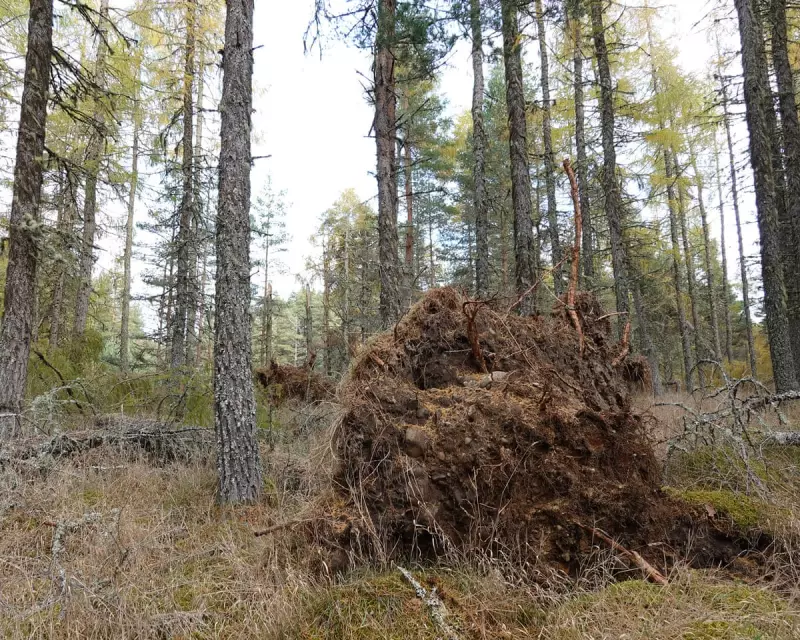
The aftermath of Storm Amy has left a dramatic mark on Abernethy Forest within the Cairngorms National Park, revealing both destruction and opportunity in this carefully managed woodland. Recent high winds have created a transformed landscape where fallen trees tell a story of nature's relentless power and the forest's ongoing evolution.
The Changing Face of a Managed Woodland
Walking through Abernethy Forest now reveals a scene of significant transformation. Where summer once displayed a cacophony of greens, autumn colours are emerging – larches turning green-yellow and bronze, birches warming to yellow, bronze and copper. The storm's impact is immediately visible along pathways lined with larches and Scots pines, where numerous trees have been completely windthrown by Amy's force.
Through newly created gaps in the canopy, previously hidden ancient 'granny' pines have been revealed, their gnarled forms standing testament to an earlier time before this area became largely plantation. The crackle of walking over fallen twigs and branches, many festooned with lichens, accompanies the discovery of these veteran trees that predate the surrounding plantation's uniform age, spacing and girth.
Nature's Domino Effect and New Opportunities
The storm has created distinct diagonal paths through the woodland where trees have fallen in domino patterns or where one partially fallen tree rests precariously against another. Each of these damage corridors points consistently north-east, revealing the storm's directional fury. These newly created openings are already beginning to change the forest's character and ecological dynamics.
Scrambling over moss-covered casualties from previous storms reveals how such events create micro-habitats that evolve over years. The newly fallen trees will similarly transform the ecosystem, gradually senescing to provide homes for beetles, ants, hoverflies and fungi – some quite rare and specifically dependent on deadwood. These organisms will in turn change through different stages of decay as more daylight filters through to the forest floor, altering the understorey vegetation and potentially allowing pioneer species like birch, rowan and juniper to gain footholds.
Creating Habitats for Forest Dwellers
The scale of the fallen trees is substantial, with root plates reaching human height or taller. The grit exposed at their bases creates perfect dust-bathing sites for capercaillies, should any be in the vicinity. The holes left by uprooted trees may develop into small pools, attracting aquatic and semi-aquatic plants, amphibians and insects including dragonflies and their larvae.
Meanwhile, the remaining standing trees will benefit from increased space to bulk out and develop, potentially growing stronger in the newly created clearings. As the wind strengthened during the visit, it cancelled out the last vestiges of coal tit and crested tit calls, along with the eerie squeak of trunk rubbing against trunk.
There's something uniquely vulnerable about being among trees when the wind begins to blow a hoolie, with upper branches whipping violently and a frenzy of bright birch leaves showering down in the last of the afternoon sun. The transformation of Abernethy Forest continues, reminding us that even in managed woodlands, nature ultimately writes its own story through events like Storm Amy.





